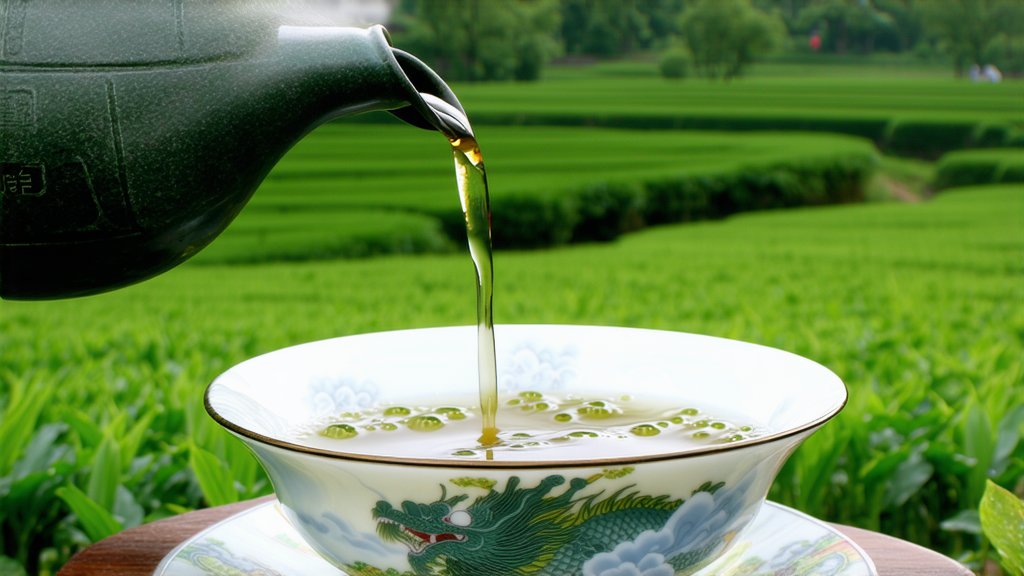
In the verdant landscapes of Hangzhou, Zhejiang Province, nestled amidst rolling hills and serene lakes, lies a treasure trove of Chinese tea heritage – the illustrious Dragon Well (Longjing) tea. Revered as the paramount representation of China's green tea category, its allure transcends borders, captivating connoisseurs worldwide with its unique charm, historical significance, and unparalleled craftsmanship.
A Glimpse into History
The tale of Dragon Well tea traces back over a thousand years, steeped in folklore and royal patronage. Legend has it that during the Tang Dynasty (618-907 AD), a heavenly dragon descended upon the region, leaving behind a wellspring whose waters endowed the local tea plants with extraordinary vitality. This mythical event lent its name to both the tea and the area, known today as Longjing Village.
However, the documented history of Dragon Well tea flourished during the Qing Dynasty (1644-1912), when it became a favorite among Chinese emperors. Its reputation soared under the reign of Emperor Kangxi, who proclaimed it the "Imperial Tea," cementing its status as a symbol of prestige and refinement.
Varieties and Characteristics
Dragon Well tea is not monolithic; it encompasses several grades, each distinguished by its origin, cultivation practices, and processing methods. The most prized among them are:
-
Xihu Longjing: Grown around the West Lake (Xihu), this variety benefits from the microclimate created by the lake's proximity, resulting in茶叶 of exceptional quality characterized by their flat, spear-like shape, vibrant green hue, and a delicate aroma reminiscent of jasmine and orchids.
-
Meiling Longjing: Harvested from the Meiling Mountains, this variant offers a more robust flavor profile with hints of chestnut and a slightly sweeter finish. Its leaves exhibit a more pronounced twist compared to Xihu Longjing.
-
Yuhang Longjing: Cultivated in Yuhang District, these teas strike a balance between the two aforementioned types, showcasing a harmonious blend of fragrance, taste, and appearance.
The Art of Craftsmanship
The meticulous process of creating Dragon Well tea is a testament to the artisanal skill passed down through generations. It involves several intricate steps:
-
Handpicking: Only the youngest, tenderest leaves—the "two leaves and a bud"—are selected. This labor-intensive practice ensures optimal flavor and nutritional content.
-
Withering: Freshly picked leaves are spread thinly on bamboo mats to lose excess moisture, softening them for subsequent processing while preserving their natural essence.
-
Fixation: Using large woks heated to high temperatures, masters quickly stir-fry the leaves to halt oxidation, locking in their vivid green color and fresh aroma.
-
Rolling & Shaping: The hallmark of Dragon Well tea's distinctive flat shape is achieved through skilled hand pressing and rolling techniques. This step also helps release the tea's inherent flavors.
-
Drying: Finally, the shaped leaves undergo gentle drying to remove any remaining moisture, ensuring they remain crisp and fragrant without compromising their delicate texture.
Savoring the Experience
To truly appreciate Dragon Well tea, one must engage in mindful tasting rituals:
-
Visual Appreciation: Observe the dry leaves for their uniform shape and vibrant color. Upon infusion, watch them unfurl gracefully, revealing a pale yellow-green liquor.
-
Aroma: Inhale deeply before sipping to capture the tea's subtle floral and vegetal notes, often described as having an "orchid-like" fragrance.
-
Taste: Take small sips, allowing the tea to coat your palate fully. Note the initial umami sweetness followed by a lingering, slightly numbing sensation on the tongue—a hallmark of Dragon Well's unique character.
-
Mouthfeel: Relish the smooth, almost creamy texture that glides effortlessly across the palate, leaving a refreshing aftertaste that invites further exploration.
-
Aftertaste: Pay attention to the lasting impression left behind, which should be clean, slightly sweet, and devoid of bitterness.
Dragon Well tea embodies the essence of China's rich tea culture—a harmonious blend of nature's bounty, human artistry, and centuries-old tradition. As you embark on this sensory journey with every sip, you partake in a timeless tradition that bridges past and present, connecting you to the ancient wisdom and enduring elegance of Chinese tea.